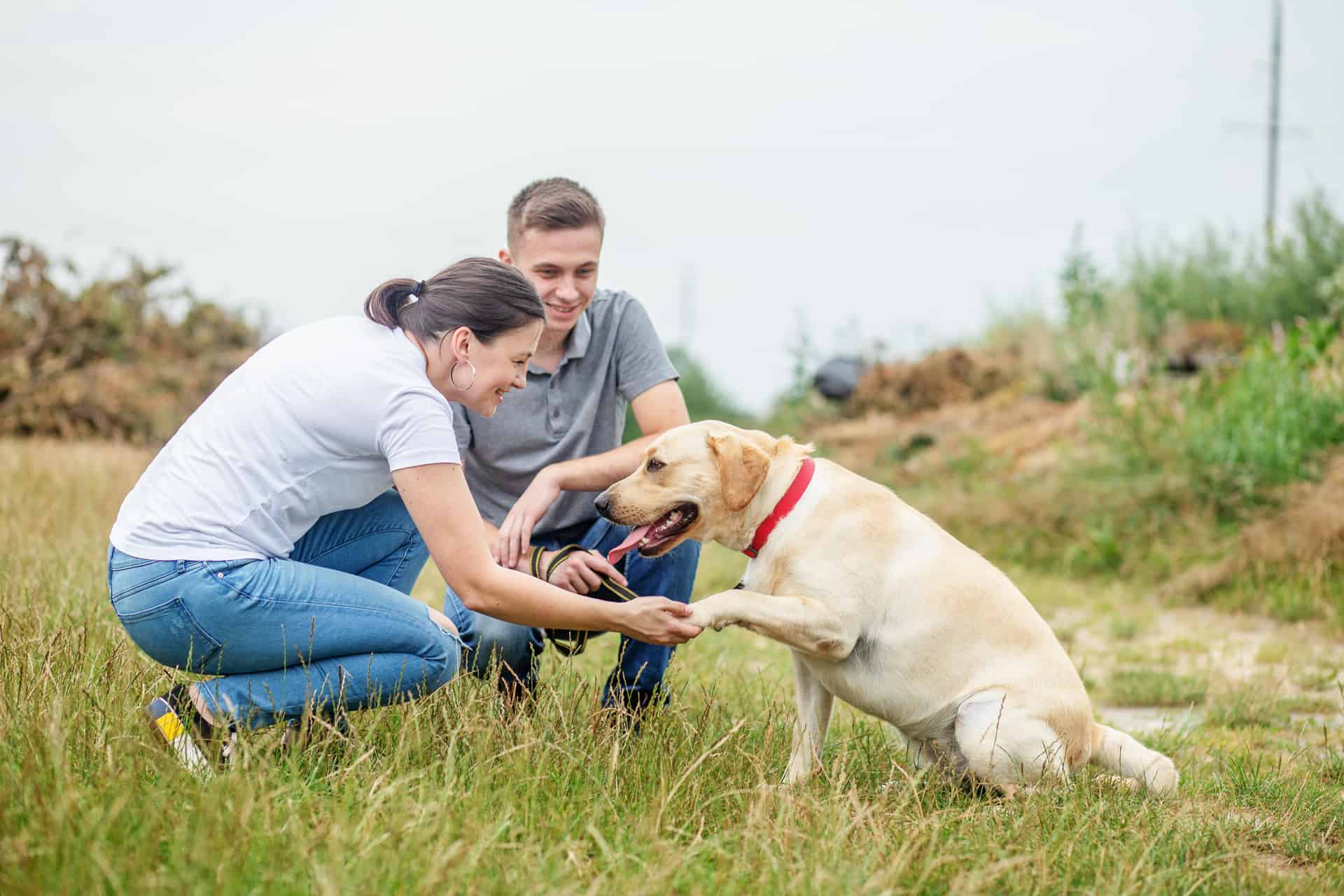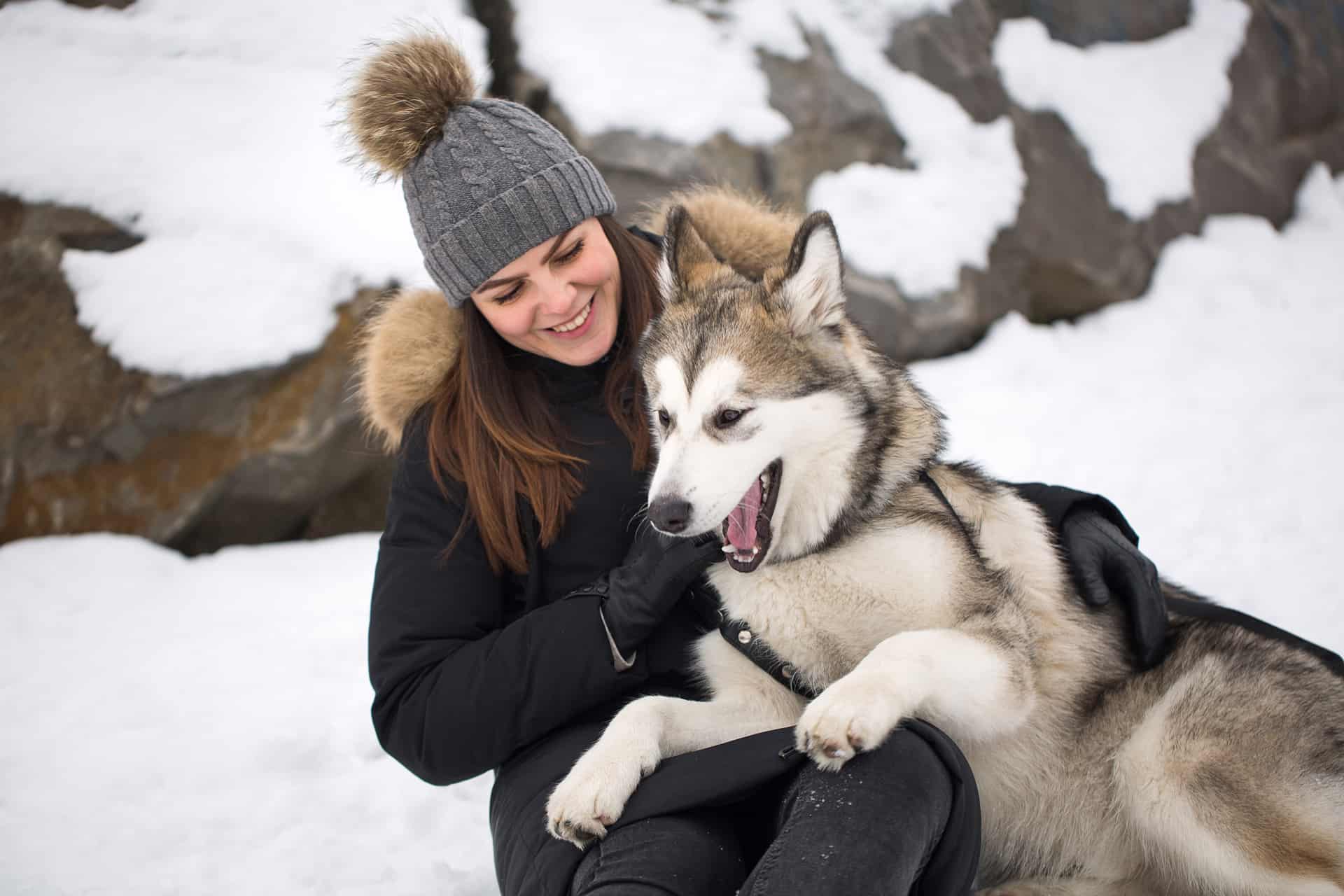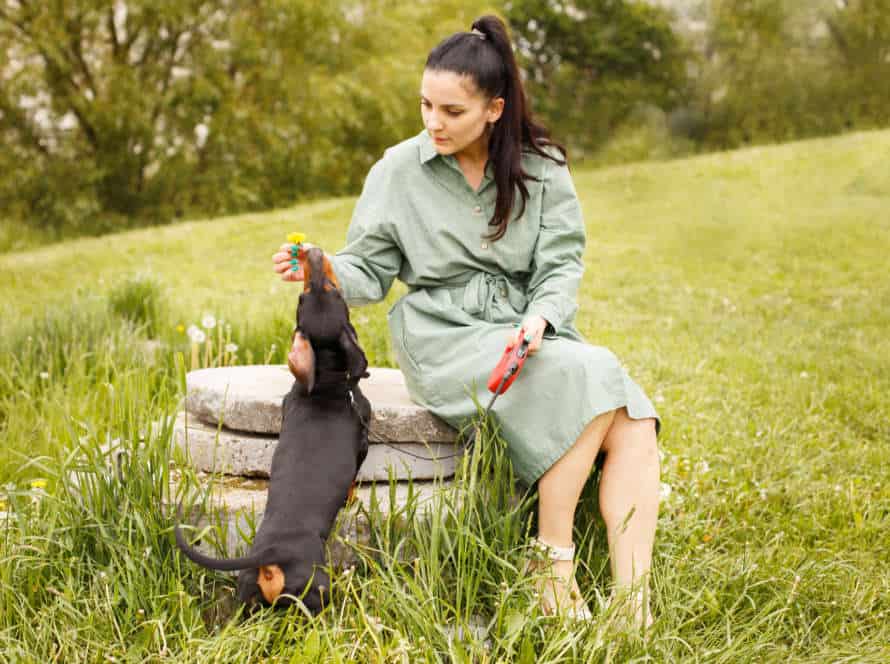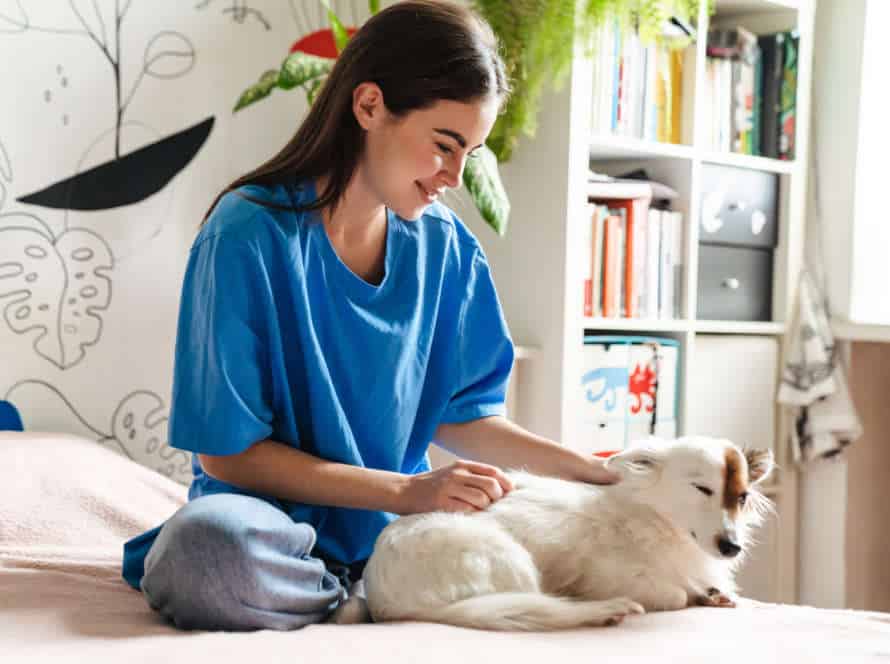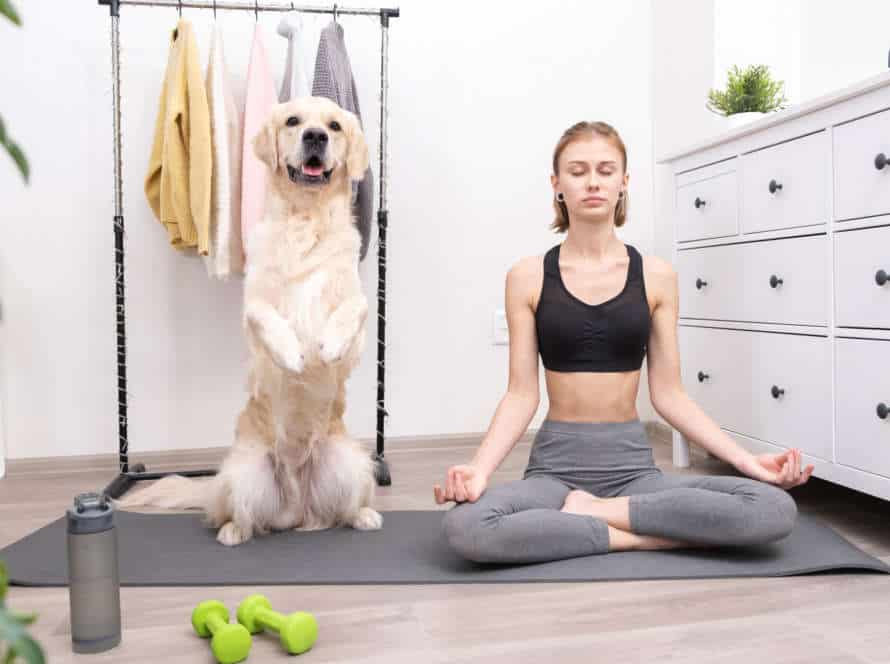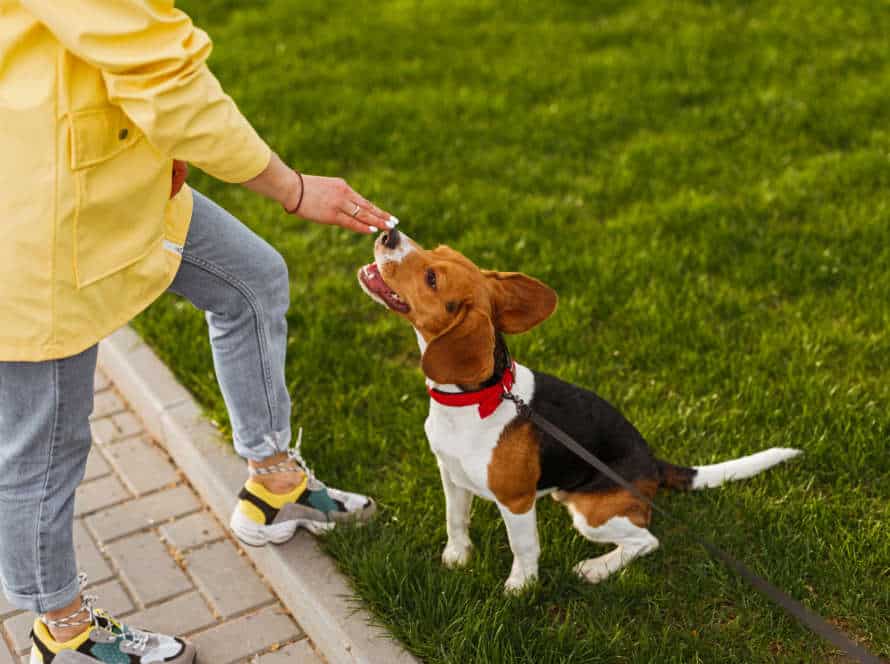Tricks for Senior Dogs with Mobility Issues: Engage Without Strain
Senior pups with mobility issues need to stay active but without straining. Here are some tricks to help them:
- Brain Games: Play mind-stimulating games like treasure hunts, hide-and-seek, or puzzle toys. These don’t require much physical exertion but still stimulate their brains.
- Treadmill Walking: A treadmill helps them stay active without too much pressure on their joints. But always supervise and pick a pace they can handle.
- Hydrotherapy: Water therapy is ideal exercise for senior dogs. It’s low-impact and the buoyancy takes the pressure off their joints.
- Massage: Give them regular massages. That helps with circulation, soothes muscles and reduces stiffness.
By using these methods, your pup can stay active without harm. Pro Tip: Talk to a vet about their health and exercise routine. That’ll help make sure you give them the best care.
Understanding Causes of Mobility Issues in Senior Dogs
Mobility troubles in elder canines can be caused by a variety of ailments. These can make it hard for them to partake in activities they used to like. Knowing the cause of the mobility problem can help you modify the activities your pup can do. This will avoid extra stress on their muscles and joints.
Aging
As dogs age, their bones, joints, and muscles begin to deteriorate. This makes them less mobile. Here are some tricks to help senior dogs with mobility issues stay active without strain:
- Low-impact exercises. Swimming or short walks on softer surfaces are easy on joints.
- Massage therapy. Massages can improve circulation, reduce inflammation, and ease muscle tension.
- Supplements. Glucosamine and chondroitin can support joint health and mobility.
- Environment. Ramps or pet stairs can help senior dogs get up and down from furniture. Adjusting the height of food and water bowls can also reduce movement.
By using these tricks, you can help your senior dog stay active without causing strain.
Arthritis
Arthritis is a frequent issue in older dogs. It can cause them difficulty in moving and discomfort. Here’s info on the condition and tricks to help your pup:
What causes mobility issues in senior canines? As they grow old, their bones and joints may weaken or get hurt, leading to arthritis, hip dysplasia, or degenerative disc disease.
Tips for senior dogs with mobility issues:
- Ramps and steps to reach higher places
- Elevated food and water bowls to prevent hurting their necks
- Non-slip flooring to avoid falls
- Low-intensity exercises like swimming or slow walks to keep muscle mass but not overtax their joints
- Orthopedic beds to give them comfort and support their joints
- Joint supplements, pain relief meds, or anti-inflammatories from your vet.
Remember to talk to your vet before making changes to your dog’s diet, exercise, or medication.
Injuries
Injuries can cause mobility issues in senior dogs. They can be from falls, accidents, or medical conditions like arthritis or hip dysplasia.
Here is how to help your senior dog stay active:
- Use a ramp or steps for stairs or getting in and out of the car.
- Provide soft bedding and support for achy joints.
- Lower the height of food and water dishes.
- Do low-impact exercises like swimming or short walks.
- Try supplements like glucosamine and chondroitin for joint health.
- Acknowledge your dog’s limits and don’t do activities that will cause more strain or pain.
- Talk to your vet for advice on managing your senior dog’s mobility issues.
Tips for Creating a Safe and Accessible Home
Create a better home for your older pup! Adjustments can help them stay active and healthy. Here are some tips to make your dog’s abode safe and accessible:
- Maximize your dog’s mobility.
- Cut down on any strain.
- Provide them with ramps, if needed.
- Keep all pathways clear and clutter-free.
- Place furniture in strategic locations.
- Offer them a cozy bed or cushion.
Non-slip surfaces
For senior dogs with mobility struggles, non-slip surfaces can be vital in making the home safe and accessible. Here’s how to make them:
- Non-slip mats or rugs: Place these in areas where your dog walks a lot.
- Non-slip coating: Add this to the floors.
- Carpet runners: Provide a non-slip surface and cushioning for your dog’s joints.
- Regular nail trimming: Keep your dog’s nails trimmed to help them stay steady.
- Booties with non-slip soles: These can give your dog extra traction on slippery surfaces.
Non-slip surfaces can make life easier for your senior dog. Give it a go!
Ramps and Stairs
Ramps and stairs are both must-haves for a home. They make it safe and accessible for people, pets, and those with mobility issues.
Tips for a senior and pet-friendly home:
Ramps:
- Select the right ramp size and slant based on the surface and user’s needs.
- Put in a non-slip ramp surface to avoid slips and falls.
- Include railings and edging for extra safety and stability.
Stairs:
- Install non-slip treads or carpet runners for better grip and no slips.
- Illuminate stairs for better visibility.
- Put up railings on both sides for support and safety.
By following these tips, seniors and pets can move around the home more easily, without straining themselves.
Adjust elevated food and water bowls
Adjusting the height of food and water bowls is needed to create a safe house for senior dogs with mobility issues. By raising the bowls, the strain on their joints can be reduced and they won’t be uncomfortable when eating.
Here’s how to adjust the bowls:
- Measure the height from the floor to the top of your dog’s shoulders.
- Choose a bowl stand or an elevated feeder that will raise the bowls to the height of the shoulders.
- Test the bowls to make sure they can comfortably reach the food and water.
- Introduce the new bowls slowly if they hesitate to use them.
- Clean the bowls regularly for hygiene and to prevent contamination.
Low-Impact Exercises for Improved Mobility
Your senior dog may start to struggle with mobility. To help, we will explain exercises that can be done at home. These activities are low-impact and help your pet’s joints stay healthy and flexible. They can also lessen strain and pain.
Walking
Walking is a low-impact exercise that can improve mobility and reduce the risk of injury. For senior dogs with mobility issues, there are ways to engage them safely. Here are some tips:
- Use a harness instead of a collar; it gives more support.
- Start with short walks and build up distance.
- Choose flat surfaces to avoid trip ups.
- Bring water & take breaks to keep hydrated.
- Consider a mobility aid, such as a sling or wheelchair, for further support.
- Remember to talk to your vet before starting a new routine.
Swimming
Swimming is a great, low-impact exercise. It can help both humans and dogs with mobility issues. With guidance and precautions, swimming can be a fun and effective way to exercise.
Seniors can benefit from swimming. It can help to reduce arthritis pain and stiffness. It can also build strength and improve cardiovascular health.
For senior dogs, swimming can help ease joint pain. It can also improve muscle tone and flexibility. Plus, it reduces stress on the back and limbs.
Before starting any exercise program, it is important to consult with a doctor or veterinarian. Also, it’s best to start slowly. It’s recommended to get help from a physical therapist, trainer, or experienced swimmer. This ensures safety and makes the most of the benefits of swimming.
Range of Motion Exercises
Range of motion exercises can help improve mobility in seniors and dogs with mobility issues. They increase flexibility and strength of joints and muscles, helping with better movement. Examples:
For seniors:
- Do shoulder circles. Stand or sit with feet hip-width apart. Raise shoulders up, hold for secs, then lower. Repeat 5-10 times.
- Ankle rotations: Sit with feet off ground. Rotate ankles in circle in each direction. 5-10 times.
For dogs with mobility issues:
- Sit-to-stand exercises: Dog sits, encourage them to stand without front legs. 5-10 times.
- Rear leg lifts: Gently lift back legs 1 at a time, hold secs before lowering. 5-10 times.
Pro Tip: Before trying new exercises, consult a doctor/veterinarian – especially if you have health conditions.
Assistive Devices for Senior Dogs
Your pup aging? Don’t worry! There’s help. Assistive devices can aid your senior dog to stay mobile and enjoy activities. What are these devices? Let us take a peek!
Lifting harnesses
Lifting harnesses are great for senior dogs with mobility issues. They give support & stability for strolling, stairs and lying down. Here’s how to use the harness and keep your pup safe:
- Choose the correct size & style for their breed & body type.
- Gradually get them used to wearing it.
- Lift them using the handles or straps – no pulling or yanking.
- Give treats & positive reinforcement to make them feel safe.
- Don’t lift or pull too much – it can hurt them.
The harness will help your senior dog stay active and healthy.
Dog wheelchairs
Dog wheelchairs are a great way to help senior dogs enjoy life, even with mobility issues. Here are some tips to make it easier:
- Have a routine for your pup – feed and exercise them at the same time every day.
- Provide ramps for difficult places – instead of stairs.
- Get a support harness – this will help them move, stand, and go up and down stairs.
- Physical therapy – with the help of a vet, gentle exercises can help with mobility and pain.
Assistive devices and support can give senior dogs a happy, healthy life.
Booties and pads for injured paws
Booties and pads are great aids for senior dogs with mobility issues. Here are some tips:
- Choose the right size that fits your dog’s paws.
- Make sure they are of high quality to prevent slips and provide a comfortable grip.
- Introduce the booties or pads using positive reinforcement, such as treats or toys.
- Start by having your dog wear them indoors, then gradually progress outside.
- Observe your dog’s behavior and comfort level while wearing them. Adjust if needed.
Lifestyle Adjustments to Improve Mobility
Our senior dog pals are aging, sometimes resulting in less mobility. It’s important to make changes to their life to help them stay active and comfy. These changes can aid their mobility, letting them do activities without strain. Let’s have a look at the adjustments you can make.
Weight management
Weight management is essential for boosting the mobility of elderly pooches suffering from issues such as arthritis, hip dysplasia, or other degenerative conditions. Here are some easy tips for interacting with your senior dog without straining their movement:
- Low-impact exercises: Instead of going on lengthy runs or steep hikes with your pup, opt for low-impact activities like strolling on flat terrain or swimming. These actions can assist in burning calories and enhancing mobility without overworking their joints.
- Managed diet: Speak to your vet about a balanced and managed diet for your senior pup. Avoid processed food and snacks and include protein-rich and natural food like lean meats, green veggies, and fruits.
- Joint supplements: Joint supplements like glucosamine, omega-3 fatty acids, and chondroitin can help reduce inflammation and pain caused by mobility troubles.
- Regular grooming: Keep up regular grooming habits such as brushing,nail trimming, and cleaning your dog’s ears and teeth to prevent infections and other issues that could affect their mobility.
Remember, making lifestyle changes like diet and exercise, as well as giving them lots of love and care, can help senior dogs stay cheerful and healthy.
Anti-Inflammatory diet
Diet can be a great way to improve mobility and reduce pain for senior dogs with joint issues. Ageing causes joints to deteriorate and become inflamed, which can be uncomfortable. Feeding a diet to reduce inflammation can help.
Here are a few dietary recommendations for senior dogs:
- Omega-3 fatty acids can help to reduce joint inflammation.
- Add turmeric to food; it has powerful anti-inflammatory effects.
- Avoid processed foods and ones high in carbs. These can cause inflammation and a sugar spike.
- Look for commercial dog food specifically designed for senior dogs. They have added nutrients and fewer calories.
By following an anti-inflammatory diet, you can help manage your senior dog’s mobility and improve their quality of life.
Alternative treatments i.e. acupuncture and hydrotherapy.
Lifestyle changes can help senior dogs with mobility issues.
Alternative treatments, like acupuncture and hydrotherapy, can also help.
Acupuncture involves inserting thin needles into specific points of the body. This stimulates and regulates energy and can reduce pain, swelling, and improve joint flexibility.
Hydrotherapy involves low-impact exercises in heated water. It promotes muscle relaxation, flexibility, and fitness. Plus, it helps reduce joint pain and swelling, while improving strength and endurance.
When combined with the right lifestyle changes, alternative treatments can help senior dogs. They can regain mobility, flexibility, and quality of life.
Frequently Asked Questions
Q: What are some common mobility issues that senior dogs face?
A: Senior dogs may experience arthritis, hip dysplasia, or spinal problems, all of which can affect their mobility and make daily activities difficult.
Q: How can I engage my senior dog without putting strain on their already limited mobility?
A: You can engage your senior dog with low-impact exercises, such as swimming or short walks, as well as mentally stimulating activities like puzzle toys and scent work.
Q: Are there any supplements or medications that can help with mobility issues in senior dogs?
A: Yes, there are a variety of supplements and medications available that can help with joint pain and inflammation, such as glucosamine, chondroitin, and non-steroidal anti-inflammatory drugs (NSAIDs). However, it’s important to consult with your veterinarian before giving your dog any new supplements or medications.
Q: How important is a comfortable sleeping environment for a senior dog with mobility issues?
A: A comfortable sleeping environment is crucial for senior dogs with mobility issues, as it can help alleviate joint pain and reduce the risk of pressure sores. Orthopedic dog beds and memory foam mattresses can provide additional support and comfort.
Q: Can physical therapy help improve mobility in senior dogs?
A: Yes, physical therapy can be effective in helping senior dogs regain mobility and reduce pain. This can include range of motion exercises, massage, and supervised exercise programs.
Q: How often should I take my senior dog to the vet for check-ups?
A: Senior dogs should see their veterinarian at least twice a year for check-ups and to monitor any potential health issues or changes in mobility. Your vet can also provide recommendations for managing mobility issues and improving your dog’s quality of life.

